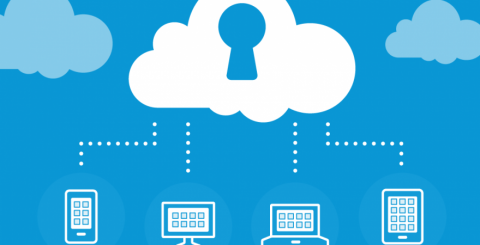Understanding Single Sign-On Its Need for Businesses

Technology and business today have a relationship which is helping both towards their goals. The main reason behind adoption is the need to move with time, and one such technology is single sign-on.
Single sign-on (SSO) perhaps is a less heard name but its implementation can be witnessed daily in personal and business lives.
Single sign-on allow users to login to multiple systems with just one set of credentials which provides them a connected experience. Connecting and utilizing a single Identity across multiple digital properties is what single sign-on does.
For businesses, single sign-on is helping them simplifying their work and improving efficiency of their users and staff.
What is Single Sign-on ?
Commonly known as SSO, is an advancement in authentication technology to further improve and limit the use of passwords as possible to user authentication which can benefit both, the user and the business.
What single sign-on achieves is it allows users to create and use a single identity across all digital properties. The same identity can be used to log into multiple web and mobile properties without having to authenticate separately for each.
A single identity enables single logout across all digital properties. Single sign-out signs users out of all the active sessions across all the properties.
The benefit of SSO can be utilized from any digital properties which are under SSO umbrella.
How does single sign on works?
The basis of SSO is centralized linked identities.
It is accomplished using LADP, JWT, and SAML.
Single sign on stores the credentials in local storage to support different authentication mechanisms for different resources and applications and translate them to the credentials required for different mechanisms.
It follows three steps i.e Authentication, Authorization and attributes exchange.
When a user tries to log in to an SSO-enabled website, its identity is validated on that website. After passing authentication check, its authorization over domains and elements is checked, making the user log in.
The access token is stored in local cookie storage until the user logs out. It is also possible to provide a custom session timeout for that cookie.
When the same user visits another SSO enabled site which is falling under same SSO umbrella, the website again checks for authentication and authorization which is validated form access token stored in local storage.
As the user logs out, the cookie session gets ended and is logged out from all the connected properties.
Types of Single Sign-on?
There are basically four types of SSO,
Enterprise Single Sign-On:
It is especially for large organizations. It is based on active directory. It allows users to use current identities for internal processes, systems, and technologies.
Container Based Single Sign-On:
It is used across the applications within the same container. In this type, credentials are shared between 2 web application that's deployed on the same application server.
Web Single Sign-On
It allows users to access a number of internet services that requires authentication by having unique website authentication. Users do not need to remember different passwords for web services that are using multiple technologies.
Federation SSO
It enables SSO between two trusted partners across heterogeneous domains.
Federation permits partners to share identity details and data within a circle of trust by using a set of open protocols.
Why businesses need single-sign-on?
Businesses with multiple web properties can implement SSO to their properties, connecting users with a unified identity on multiple web platforms.
Especially when in mergers and partnerships, there is a need to unify identities for future business goals. The specialty of unifying existing and future customer identities is only possible through it only.
For internal processes in business, the employees find it difficult to use multiple credentials, just like for multiple web properties. Every software and process has its own set of credentials, like Email, CRM, etc., using a single identity with seamless login definitely will help in productivity.
This is how single sign-on works and how business can use it in leveraging it.
Similar Articles
Discover how partnering with a software developer recruitment agency can prevent burnout in development teams and enhance project sustainability.
Learn how corporate event catering boosts image, fosters networking, reduces stress, and creates memorable experiences at professional gatherings.
Discover essential commercial HVAC maintenance strategies to cut costs, boost efficiency, and ensure comfort for employees and customers.
Maximize your corporate mentoring program's impact. Discover best practices for strategic implementation to foster growth and development.
Strong bookkeeping turns financial chaos into clarity, guiding smarter decisions, ensuring compliance, and building long-term business stability.
How building inclusive workplaces drives innovation, boosts employee engagement, and ensures long-term business success.
Why NDIS consultants are crucial for your business success in 2025. Stay compliant, efficient, and ahead in the evolving NDIS landscape.
Discover 6 smart tips to choose high-quality shipping containers that suit your needs—whether for storage, transport, or creative projects.
The shift to remote work has revolutionized the modern workplace, offering employees greater flexibility and organizations a broader talent pool. This transition has introduced new vulnerabilities in data security that were less prominent in traditional office environments









